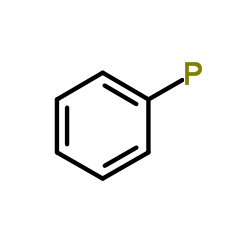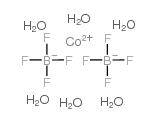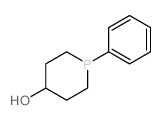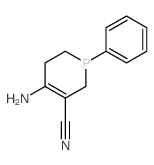15909-92-9
| Name | 3-[2-cyanoethyl(phenyl)phosphanyl]propanenitrile |
|---|---|
| Synonyms |
MFCD00013827
3,3'-phenylphosphanediyl-di-propionitrile 3,3'-Phenylphosphandiyl-di-propionitril 3,3'-phenylphosphanediyl-bis-propionitrile |
| Boiling Point | 176-178ºC 0,5mm |
|---|---|
| Melting Point | 72-73ºC |
| Molecular Formula | C12H13N2P |
| Molecular Weight | 216.21900 |
| Flash Point | 207.4ºC |
| Exact Mass | 216.08200 |
| PSA | 61.17000 |
| LogP | 2.62116 |
| Appearance | crystal | colorless |
| Vapour Pressure | 3.08E-07mmHg at 25°C |
|
Section 1: Product Identification Chemical Name:Bis(2-cyanoethyl)phenylphosphine, min. 97% CAS Registry Number:15909-92-9 Formula:(NCCH2CH2)2(C6H5)P EINECS Number:none Chemical Family:organophosphorus ligand Synonym:None
Section 2: Composition and Information on Ingredients IngredientCAS NumberPercentACGIH (TWA)OSHA (PEL) Title Compound15909-92-9100%no datano data Section 3: Hazards Identification Emergency Overview:Irritating to skin, eyes and respiratory tract. May be harmful if swallowed. Primary Routes of Exposure:Ingestion, inhalation Eye Contact:Causes mild to severe irritation of the eyes. Skin Contact:Causes slight to mild irritation of the skin. Inhalation:Irritating to the nose, mucous membranes and respiratory tract. Ingestion:No information on the physiological effects of ingestion. Acute Health Affects:Irritating to skin, eyes and respiratory tract. Chronic Health Affects:No information on the effects of long-term exposure. NTP:No IARC:No OSHA:No SECTION 4: First Aid Measures Immediately flush the eyes with copious amounts of water for at least 10-15 minutes. A victim may need Eye Exposure: assistance in keeping their eye lids open. Get immediate medical attention. Wash the affected area with water. Remove contaminated clothes if necessary. Seek medical assistance if Skin Exposure: irritation persists. Remove the victim to fresh air. Closely monitor the victim for signs of respiratory problems, such as difficulty Inhalation: in breathing, coughing, wheezing, or pain. In such cases seek immediate medical assistance. Seek medical attention immediately. Keep the victim calm. Give the victim water (only if conscious). Induce Ingestion: vomiting only if directed by medical personnel. SECTION 5: Fire Fighting Measures Flash Point:no data Autoignition Temperature:no data Explosion Limits:no data Extinguishing Medium:carbon dioxide, dry powder or foam If this material is involved in a fire, fire fighters should be equipped with a NIOSH approved positive pressure Special Fire Fighting Procedures: self-contained breathing apparatus and full protective clothing. Hazardous Combustion andIf involved in a fire this material may emit toxic organic fumes. Decomposion Products: Unusual Fire or Explosion Hazards: No unusual fire or explosion hazards. SECTION 6: Accidental Release Measures Spill and Leak Procedures:Small spills can be mixed with vermiculite or sodium carbonate and swept up. SECTION 7: Handling and Storage Store in a tightly sealed container. Keep away from heat and direct sunlight. Prolonged exposure to air may Handling and Storage: result in the degradation of the product. SECTION 8: Exposure Controls and Personal Protection Eye Protection:Always wear approved safety glasses when handling a chemical substance in the laboratory. Skin Protection:Wear protective clothing and gloves. Ventilation:Material may form a fine dust. If possible, handle the material in an efficient fume hood. If ventilation is not available a respirator should be worn. The use of respirators requires a Respirator Respirator: Protection Program to be in compliance with 29 CFR 1910.134. Ventilation:Material may form a fine dust. If possible, handle the material in an efficient fume hood. Additional Protection:No additional protection required. SECTION 9: Physical and Chemical Properties Color and Form:colorless xtl. Molecular Weight:216.22 Melting Point:72-73° Boiling Point:176-178°C/0.5 mm Vapor Pressure:no data Specific Gravity:no data Odor:none Solubility in Water:insoluble SECTION 10: Stability and Reactivity Stability:air sensitive solid Hazardous Polymerization:no hazardous polymerization Conditions to Avoid:prolonged contact with air Incompatibility:oxidizing agents and halogens Decomposition Products:carbon dioxide, carbon monoxide, phosphorus pentoxide, nitrogen oxides, and organic fumes. SECTION 11: Toxicological Information RTECS Data:No information available in the RTECS files. Carcinogenic Effects:No data available Mutagenic Effects:No data available Tetratogenic Effects:No data available SECTION 12: Ecological Information Ecological Information:No information available SECTION 13: Disposal Considerations Disposal:Dispose of according to local, state and federal regulations. SECTION 14: Transportation Shipping Name (CFR):Non-hazardous Hazard Class (CFR):NA Additional Hazard Class (CFR):NA Packaging Group (CFR):NA UN ID Number (CFR):NA Shipping Name (IATA):Non-hazardous Hazard Class (IATA):NA Additional Hazard Class (IATA):NA Packaging Group (IATA):NA UN ID Number (IATA):NA SECTION 15: Regulatory Information TSCA:Not listed in the TSCA inventory. SARA (Title 313):Title compound not listed. Second Ingredient:none SECTION 16 - ADDITIONAL INFORMATION N/A |
| Risk Phrases | 20/21/22-36/37/38 |
|---|---|
| Safety Phrases | 26-36/37/39 |
| RIDADR | UN 3439 |
| Packaging Group | III |
| Hazard Class | 6.1 |
| HS Code | 2926909090 |
|
~81% 
15909-92-9 |
| Literature: Jiang, Yutong; Jiang, Qiongzhong; Zhu, Guoxin; Zhang, Xumu Tetrahedron Letters, 1997 , vol. 38, # 2 p. 215 - 218 |
|
~68% 
15909-92-9 |
| Literature: Kihara, Keiko; Suzuki, Takayoshi; Kita, Masakazu; Sunatsuki, Yukinari; Kojima, Masaaki; Takagi, Hideo D. Bulletin of the Chemical Society of Japan, 2012 , vol. 85, # 10 p. 1160 - 1166 |
|
~% 
15909-92-9 |
| Literature: Doklady Akademii Nauk SSSR, , vol. 127, p. 1217 Doklady Chemistry, 124-129<1959>657 |
| Precursor 5 | |
|---|---|
| DownStream 4 | |
| HS Code | 2926909090 |
|---|---|
| Summary | HS:2926909090 other nitrile-function compounds VAT:17.0% Tax rebate rate:9.0% Supervision conditions:none MFN tariff:6.5% General tariff:30.0% |









![3-[3-aminopropyl(phenyl)phosphanyl]propan-1-amine structure](https://image.chemsrc.com/caspic/075/6775-01-5.png)